Mysterious Water Suspension
At first glance, you might think that you’ve seen this science demonstration attempted by a friend. A glass jar is filled with water and covered […]
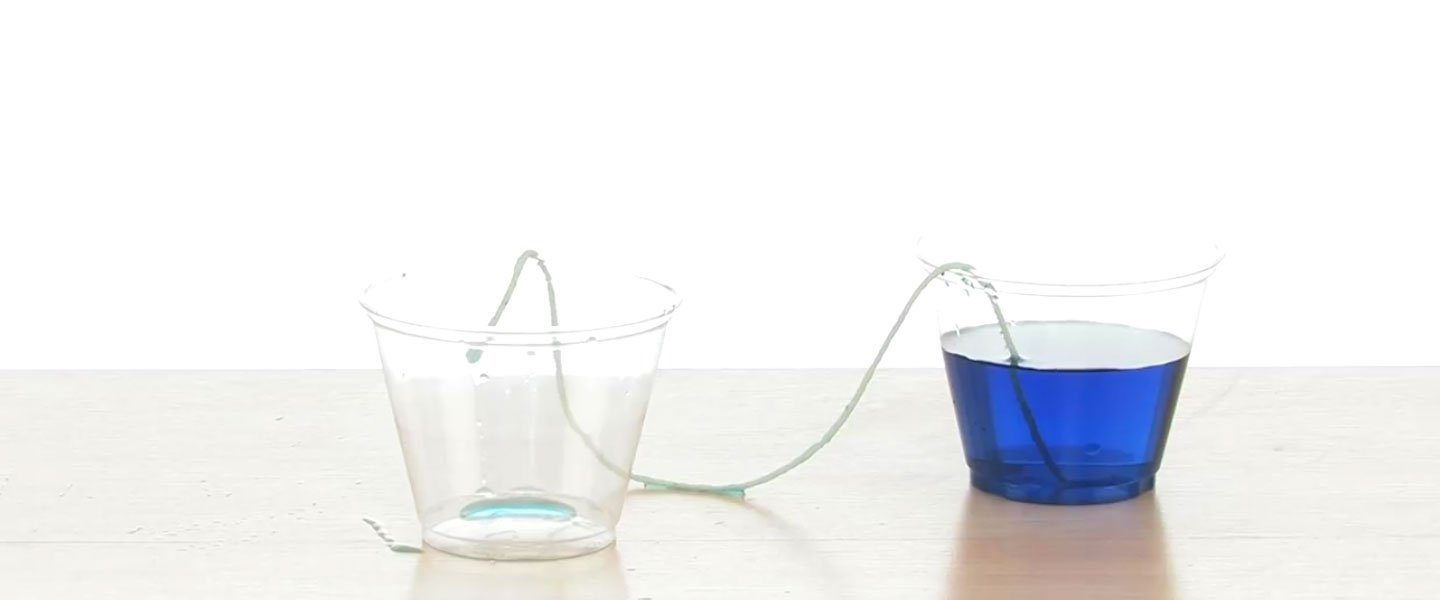
Spangler researchers use science to upgrade simple experiences. Making ice cream? Do it with liquid nitrogen. Need to blow out a candle? Use an air cannon that can do it from 200 feet away. Most people pour water from one cup into another by… well… pouring water from one cup into another. Hey, just use a string and two cups held apart from each other.
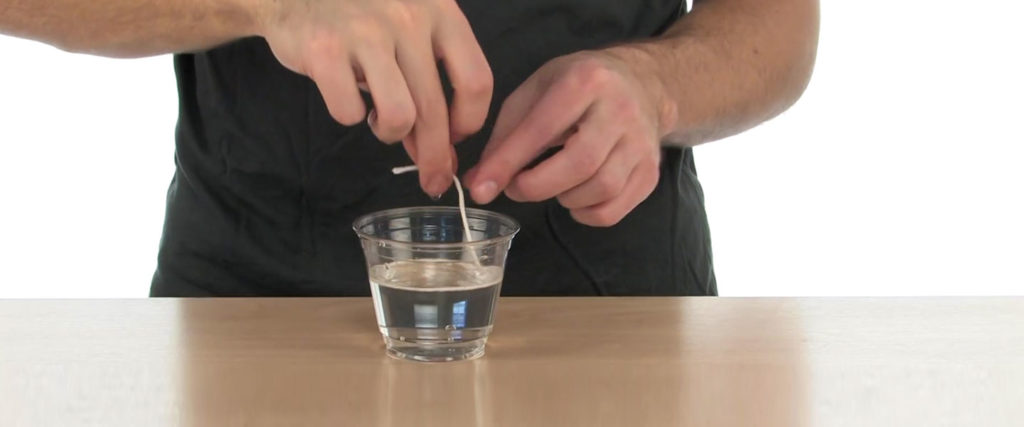
Start with one cup filled with water and one cup empty. Cut a length of string about 24″ (61 cm) long. Hold one end of the string and dip the rest into the water to get it wet.
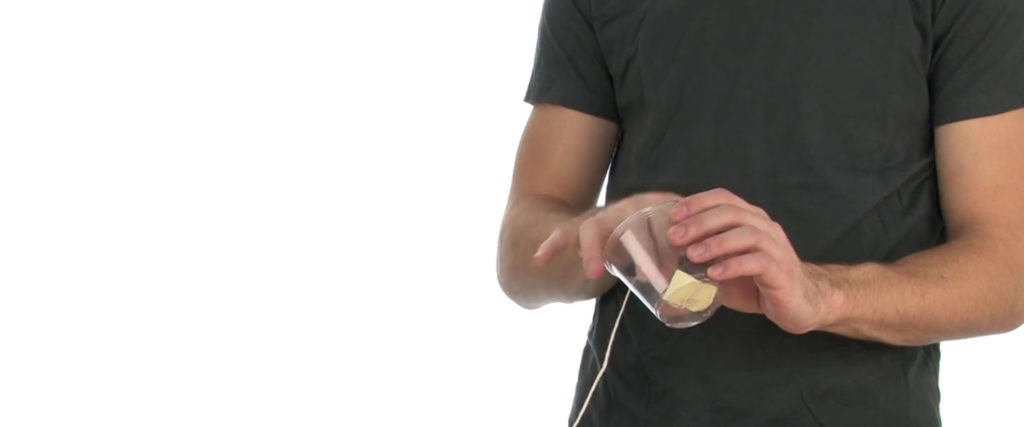
Tape the dry end of the string to the inside bottom of the dry cup at the center. Pretty much any type of tape will work. Press the tape firmly to the cup. Test it with a gentle tug.
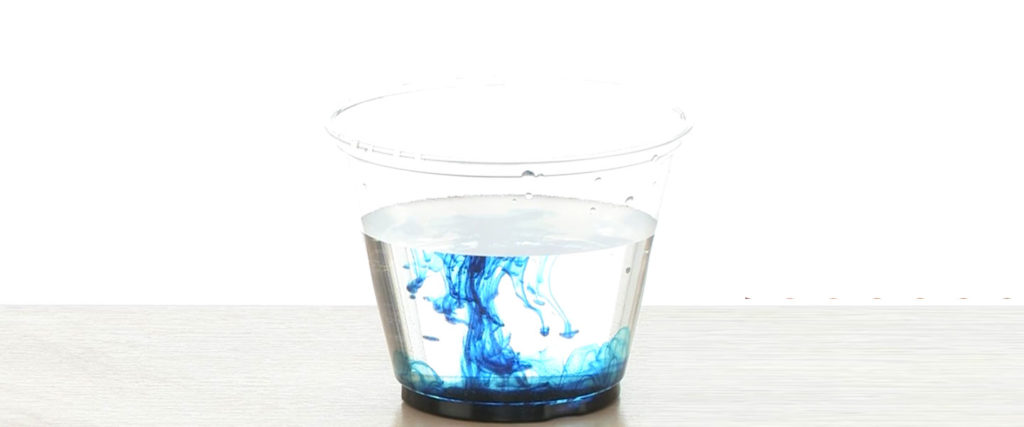
Add some food coloring to the water. This makes it easier to see what’s happening.
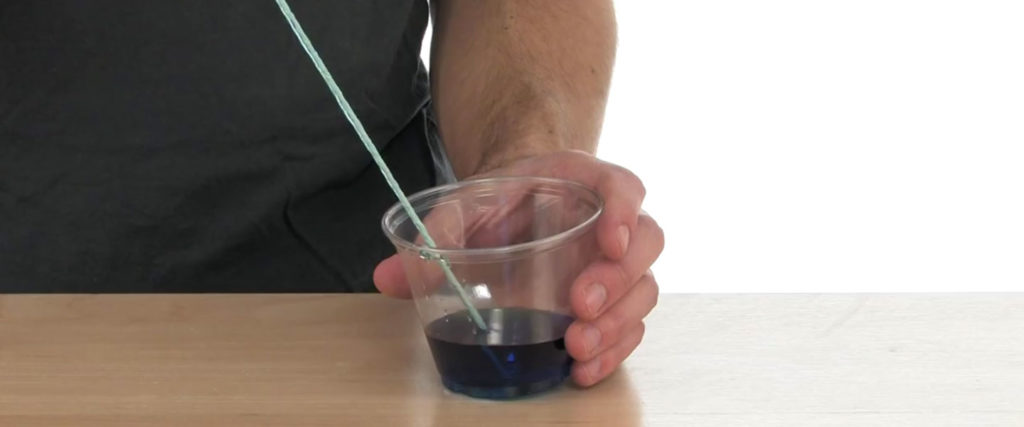
Hold the loose end of the string in the water and hold the water cup slightly apart from and above the dry cup. Keep them far enough apart that the string is as taut as you can make it without pulling off the tape.
Tilt the water toward the string and slowly pour it out of the cup and down the string.
Keep the string in the bottom cup away from the rim so the water flows into the bottom of the cup.
OK, it takes a lot longer to pour the water water this way but you certainly have upgraded the science of the experience.
You probably know that water is H2O and also know that each molecule of water is made up of two hydrogen atoms (H) and one oxygen atom (O). A drop of water has a gazillion molecules that are held together by electrical, molecular bonds. In this case, it’s called hydrogen bonding and it’s quite strong. These strong hydrogen bonds allow water molecules to stick together very well and move down the string into the bottom cup. When like molecules grab each other, it’s called cohesion.
You moistened the string to help the water molecules stick together and stick to the string. Water molecules can stick to other materials, too. This property of different molecules sticking to each other is called adhesion. In this case, water molecules stick to the string and other water molecules stick to them. It’s likely that some water dripped off of the string somewhere on its downhill trip. This is because adhesion is not as strong as cohesion.
Pouring water using a string is pretty cool, but it isn’t a science fair project, yet. You can create a science fair project by identifying a variable, or something that changes, and deciding on something to measure in this experiment. Let’s take a look at some of the variable options that might work:
That’s just a few ideas, but you aren’t limited to those! Try coming up with different ideas of variables and give them a try. Remember, you can only change one thing at a time. If you are measuring the distance the objects travel, make sure that the other factors are remaining the same!